Stephanie Syjuco is the artist behind The Counterfeit Crochet Project (Critique of a Political Economy), a lengthy community-based crochet art project that deserves continued admiration for its thought-provoking design and messaging.
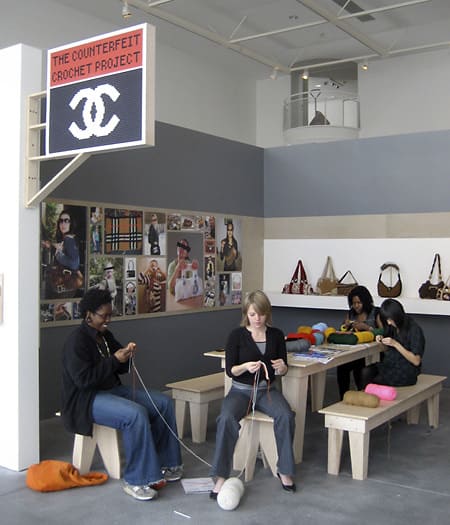
Artist Stephanie Syjuco
Stephanie Syjuco is a Philippines-born, San Francisco-based artist who enjoys craft and has a strong interest in issues around piracy and the reproduction of other people’s work.
Syjuco’s bio on her website describes her work as “large-scale spectacles of collected cultural objects, cumulative archives, and temporary vending installations, often with an active public component that invites viewers to directly participate as producers or distributors”.
She explores the concept of community-created art (including shareware) and the contrast between high and low-end art and materials in her work.
Right in line with this is her work in exploring counterfeiting, which she has done in multiple ways including teaching international workshops on counterfeiting.
The Counterfeit Crochet Project
Stephanie launched The Counterfeit Crochet Project back in 2006. She asked crocheters to find a photo of a designer handbag and then to use their crochet skills to recreate that handbag to the best of their ability as a high-quality handcrafted knockoff.
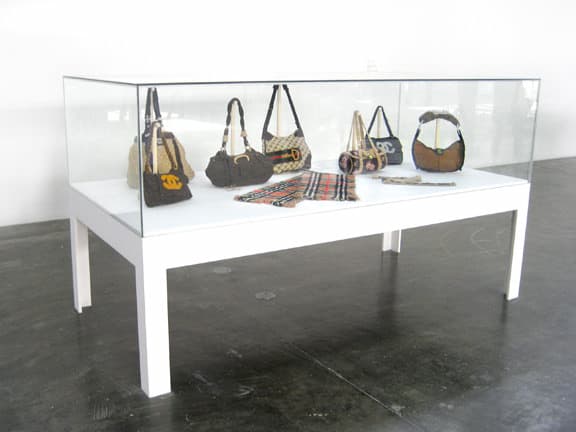
The project explores the concept of ownership of certain designs and what it means to appropriate that in handcrafting.
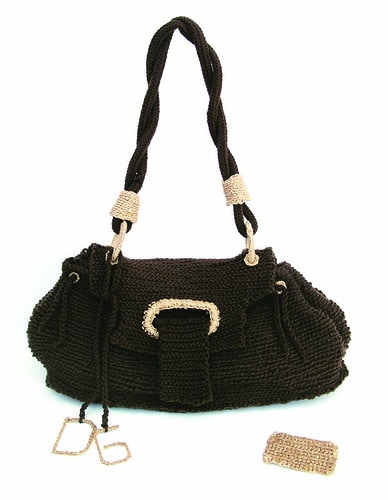
Stephanie explains a bit more on her artist website:
“The resulting “translations” are both homages and lumpy mutations. Crochet is considered a lowly medium, and the limitations imposed by trying to create detail with yarn take advantage of the individual maker’s ingenuity and problem-solving skills.”
Stephanie goes on to explain her interest in this project as it raises similarities between modern capitalistic manufacturing and distribution methods.
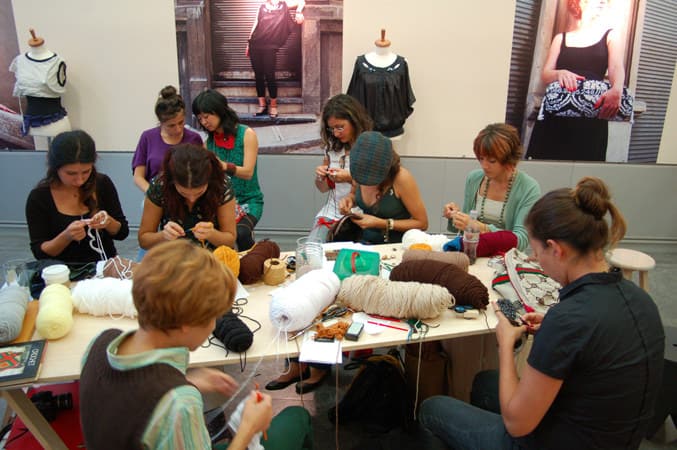
She observes that “as a collaboration it parallels the idea of “outsourcing” labor, but also adds a democratic and perhaps anarchic level of creativity–within the basic framework, participants have taken liberties with their translations, changing colors, adding materials (cardboard, hot glue, etc.) to suit their needs.”
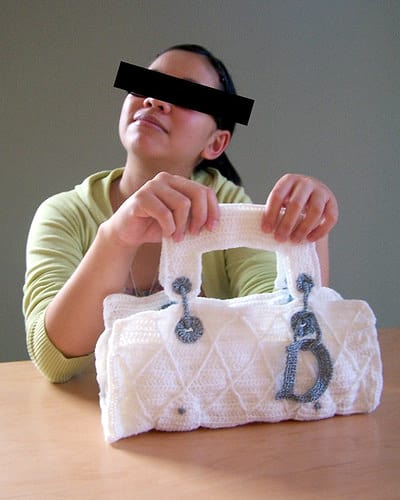
The collaborators and makers of the project were allowed and encouraged to keep their bags for use, ” in an attempt to insert strange variants into the stream of commerce and consumption.”
The project really took off with contributions from many different types of people, probably people who held a lot of different beliefs about the fashion industry and the craft industry.
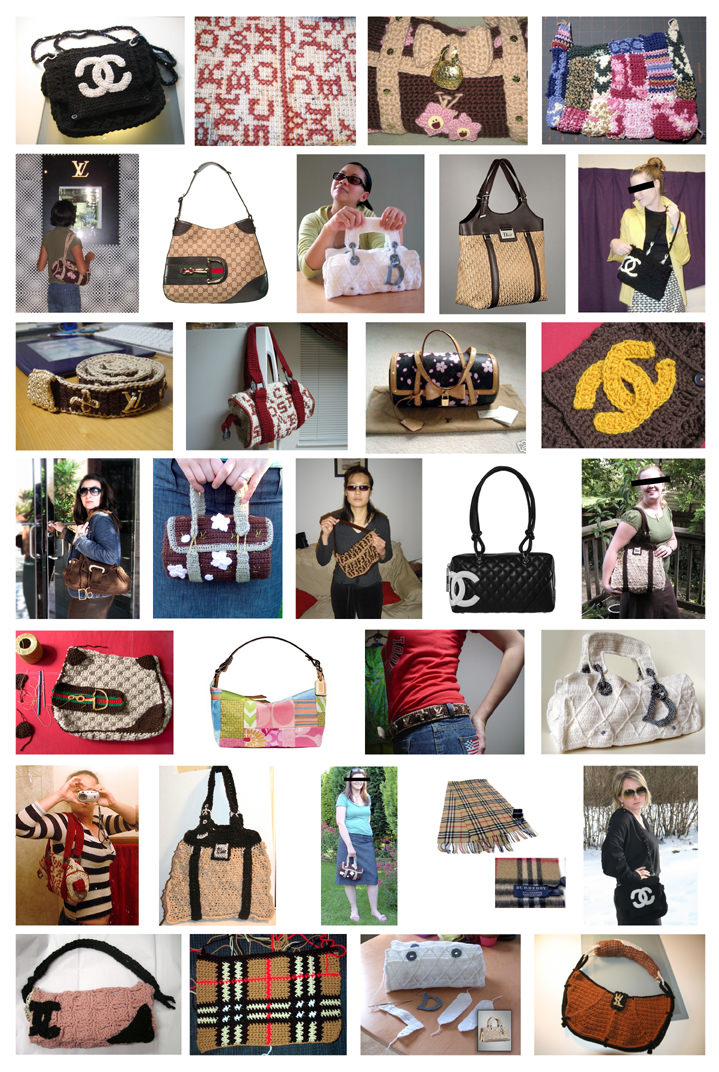
One thing that I think that the Counterfeit Crochet Project really highlights is the issue of who has the right to make money from intellectual property, and how that plays out in the real world.
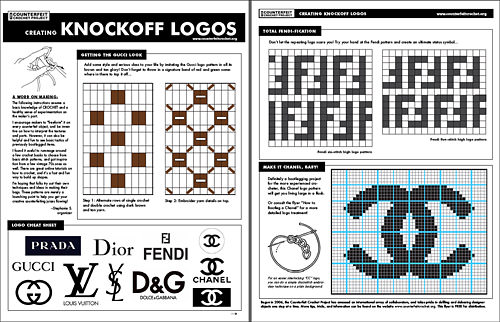
On the one hand, you want artists to be able to retain the rights to their individual work and not have that copied by big business. On the other hand, do we afford those same rights to large designers?
Large fashion companies have been known to mass produce their own designs using cheap overseas labor, so where is the “bad” in copying those designs as a handcrafter on a small scale?
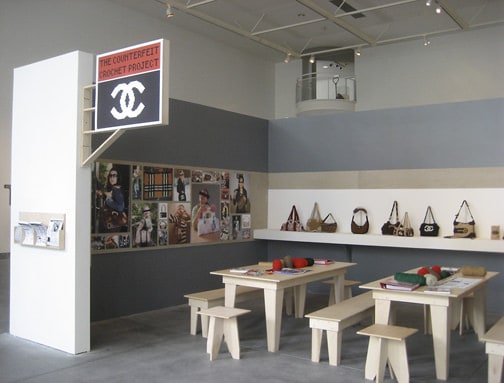
To be clear, I’m not saying one way or another what I think the answers to these questions are. I just think that these are the types of questions that The Counterfeit Crochet Project brings up. We are asked by this artist’s work to question ownership over art and ideas.
Where To Find Stephanie Syjuco
Stephanie continues to curate and create meaningful art that makes you think, question, and explore yourself and the world around you.
Although she does not actively create crochet content and pieces, her Counterfeit Crochet Project still makes us think and wonder today, while also continuing to inspire creativity and resourcefulness.
You can find Stephanie’s current and past work on her artist website, while also finding her on Instagram and Facebook.

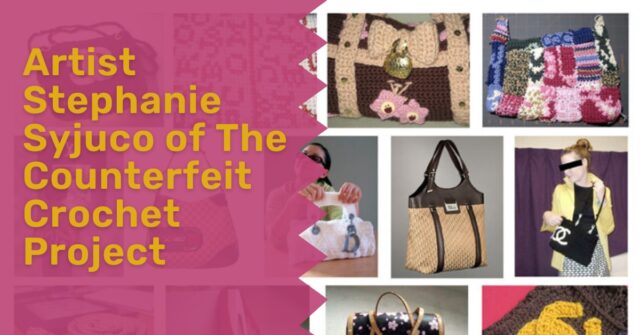
Thanks for sharing more about Stephanie! I’ve always been so intrigued by this project and am glad to see it continuing.
A really intriguing project- but I am amazed it is unmolested by industry giants…
I recently had the weight and wrath of Etsy and Chanel descend on me for daring to describe a knitted suit pattern[ circa early 60’s ] as “Chanel style” !!!
Oh yes- Chanel have a “shop” set up with the sole purpose of telling people just how bad counterfeiting is and the multitude of variations on the word Chanel they consider fall under this umbrella.
What a shame the multitude of creative individuals don’t have similar-or any real -protection from industry giants ripping off their ideas…
I often work with children and a huge part of the joy of this is their creative variation on a set theme…maybe I should try something like this with a group – might be amazing; definitely interesting…
:)
wonkyzebra
Good point. Stephanie actually did get some legal hassles from Louis Vuitton and possibly some of the other big brands. LA Mag has some info about that at http://www.lamag.com/laculture/culturefilesblog/2013/03/01/so-you-want-a-dior-handbag-make-it-yourself.
Love what you’ve shared about working with children. Great description – so true and so inspiring and I’d love to know more about it!